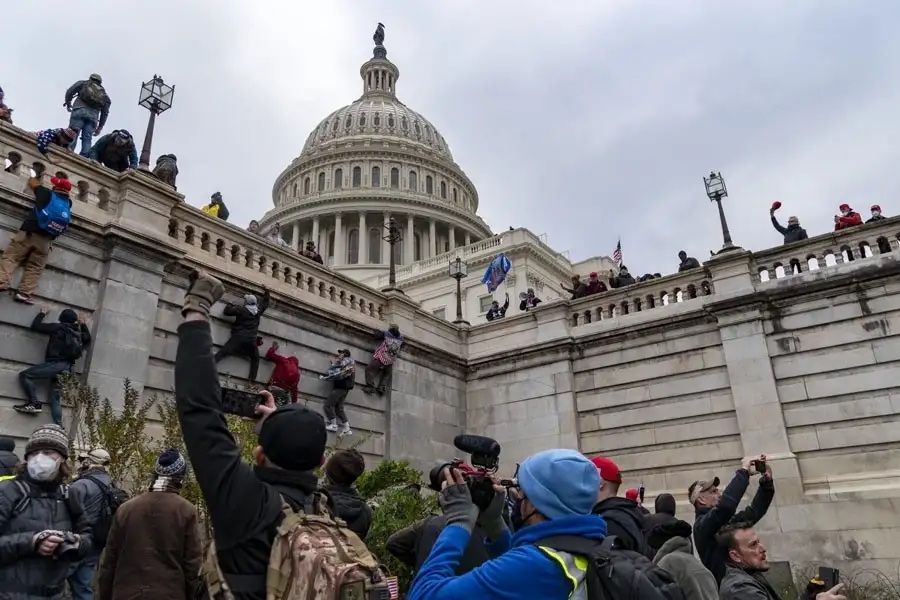Four Principles For Building Power in Media


2021-01-19
The storming of the Capitol was one more violent event in a series of violent events that will continue, after President Trump leaves office. These events proceed logically from a system of belief, a story that presents America as having been “stolen.” And not just the 2020 election. Since 2008 at least, the story goes, a growing cast of global elites has orchestrated all manner of theft for their advantage. Harmony Labs first encountered this story in 2016, while mapping the narrative landscape for climate denial. That was before it went by QAnon, before we learned to see it as the latest update of white supremacy or conspiracy cult. Since then, the story has grown, not just in adherents, and allies willing to instrumentalize them for profit and power. (See the polling.) The story has grown in scope, like a cancer in metastasis, folding in more and more organs and issues of contemporary life. It starts to look like the perfect, iteratively developed, crowd-sourced “big lie,” already doing the dirty work of corrupting common sense and trust in public life, making governance even on pressing life-and-death matters, like COVID, so difficult, that an effective autocrat brought to power by any means seems like a sensible future.
This is a future I’m not ready for. So, informed by Harmony Labs’ decade of narrative analysis experience and its recent work on the Narrative Observatory, I’d like to offer a few general thoughts, followed by a few suggested actions.

A lie binds together “liar” and “lied to” (or “lied with”) with invisible threads that go deeper than the immediate deception. To subscribe to a lie — by repeating it, believing in it, or merely being complicit — is to give up something of our power to distinguish what is true, to sense accurately, and therefore also to act autonomously and well. In this way, the liar gains power. The liar subdues and subjugates. With each new lie, he recreates a “world according to his will,” as Kai Strittmatter writes in his excellent recent analysis of this dynamic in China. This dynamic may explain why the political payments we were sure President Trump’s lies would sooner or later exact never really came due. And we may want to view some of our national myths (which Plato called “noble lies”) in this light, myths about America’s exceptionalism, its founding, its military and police forces, the economic opportunities it affords. QAnon arose to fill a hole, which may look curiously like the shape these national myths and imagined futures once occupied in some people’s lives and identities, before they were publicly dismounted. I once spent an evening with an evangelical preacher, who told me about a hasty, early-career exorcism, which ended badly, when the next day more pernicious spirits moved in to take possession. Lesson being: the delicate operation of extracting bad, deeply held stuff leaves a hole, and something worse may come forward to fill it.
The same goes for national myths, and lies of all shapes and sizes, which is good. But this change does not happen through an orderly unfolding of arguments and evidence. As we have all observed on social media by now, more often than not, we find ways to integrate new evidence into an existing story we hold about the world, even when that evidence seems, at first, to contradict our story. Rather, the stories we’re attracted to change when we encounter new stories that connect a past we recognize to a future we want and move through and resonate with our values. We noticed this kind of change recently in one of the audiences we pay attention to, which we call Tough Cookies. With a belief that a little faith and hard work can solve just about anything, core values of social order and security, and a penchant for news, this audience took in the summer’s racial justice protests, framed as riots, and started favoring stories of authority, social dominance, law and order, a return to the way things were . . . the kind of stories circling the gravity of QAnon and its political cheerleaders. Then the attack on the Capitol happened, which was not the story Tough Cookies signed up for. What now? Now there is an opportunity to start telling stories that feel like home to Tough Cookies: welcoming, well ordered, stabilizing. There may be a larger opportunity too, for a new national story, or stories, that supersede politics, reach people where they are, and give them something more to stand for than their own interests. Which begs the question: whose role is it to shape and share such stories?
Of course the people responsible for the attack on the Capitol should be brought to justice. And while we’re doing that, we may want to set aside our anger, fear, disgust, exasperation, and whatever else we’re feeling, and try to understand who these people are, where they’re coming from, and what they need. (Hint: they’re part of an audience we call Don’t Tread on Me.) Because at the very least we need to offer them a way out of the illegitimate election lie, maybe also a way out from all the other toxic story strands knit together in the last four years, and a way to save face for having been so wrapped up in them. If they don’t find a home in some new story fast—like in the next few weeks or months—we may face another awful four years, this time of active armed insurgence.
Someone needs to start shaping and sharing the stories that bring us back from the brink. Here’s how Harmony Labs and our partners can help:



